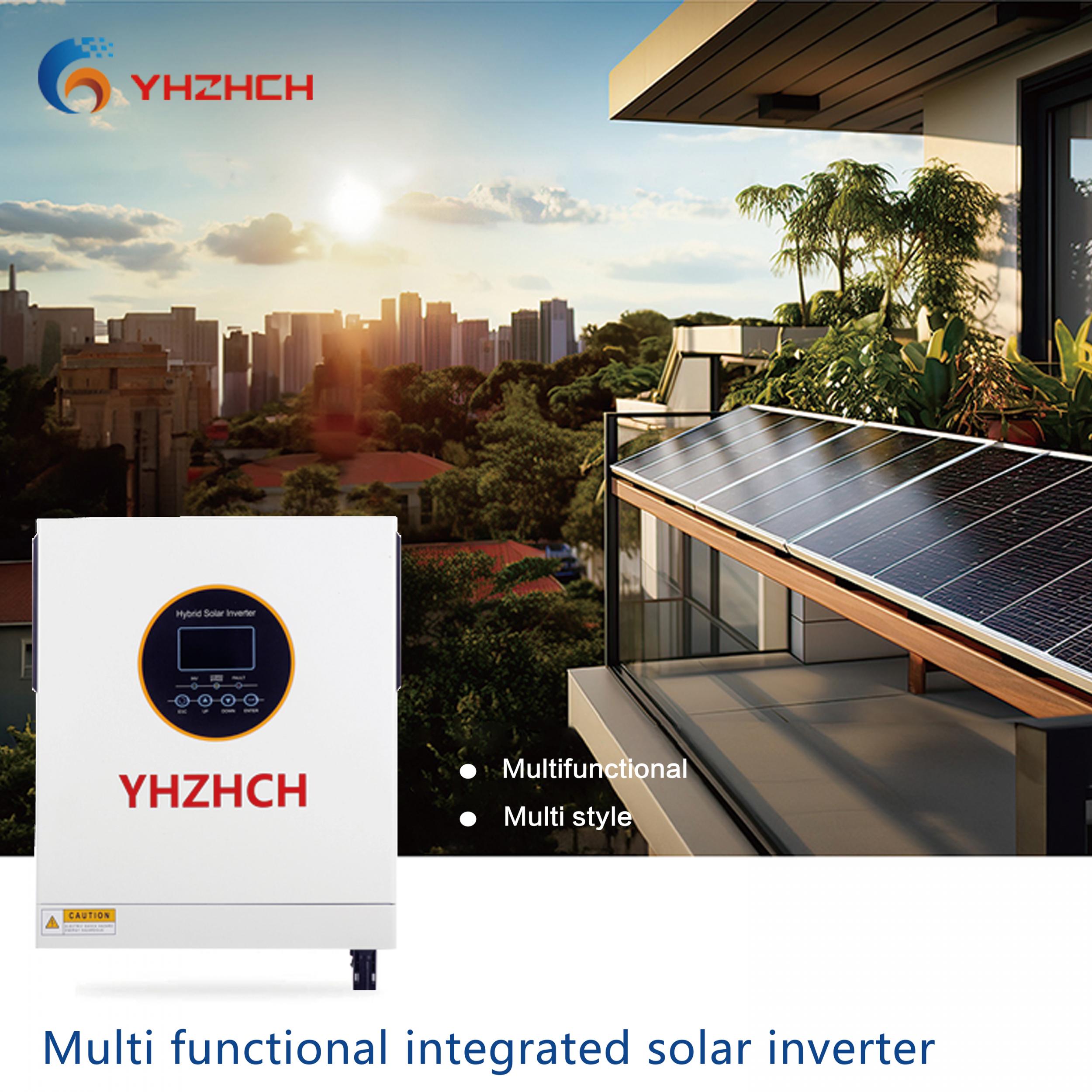In home photovoltaic power generation systems, solar inverters are one of the core devices, responsible for key functions such as energy conversion, grid adaptation, system protection, and optimization management. Their specific roles are as follows:
1、 Electric energy conversion: the "bridge" for converting DC to AC
Core functions
Solar panels (photovoltaic modules) generate direct current (DC) through the photoelectric effect, but household appliances (such as refrigerators, air conditioners, lighting, etc.) and the power grid typically use alternating current (AC).
The primary function of an inverter is to convert the direct current output from solar panels into standard alternating current for direct use in households or integration into the power grid.
Conversion efficiency affects system revenue
The conversion efficiency of the inverter (such as 97% -98%) directly affects the system's power generation. For example, if the inverter efficiency of a 10kW photovoltaic system is 98%, compared to a 95% model, it can generate an additional 260 degrees of electricity per year (calculated based on an average of 4 hours of sunlight per day).

2、 Adapting to the power grid: meeting the requirements of grid connection technology
If the household photovoltaic system needs to be connected to the grid for operation (with surplus electricity or fully connected to the grid), the inverter must meet the electrical specifications and safety standards of the grid, including:
Voltage/frequency matching
The output voltage is stable (such as 220V/50Hz for household electricity in China), and the frequency error is controlled within ± 0.5Hz to ensure compatibility with the power grid.
Optimization of Power Quality
Reduce harmonic pollution (THD value below 5%), improve power factor (close to 1), and avoid interference with the power grid and household appliances.
Anti islanding protection
When the power grid is cut off, the inverter needs to automatically cut off the output within 2 seconds to prevent residual electrical energy from causing danger to maintenance personnel ("islanding effect").
3、 System Protection: Ensuring Security and Stability
The inverter is equipped with multiple protection mechanisms to ensure the safe and reliable operation of the photovoltaic system
Overvoltage/undervoltage protection
When the input voltage (DC side of the battery board) or output voltage (AC side) is abnormal, the automatic shutdown protection device will be activated.
Overcurrent/Short Circuit Protection
Prevent damage to components or circuits caused by current overload and avoid the risk of fire.
Temperature/humidity protection
Prevent the inverter from striking due to high temperatures through fan cooling or intelligent temperature control system; IP65 dustproof and waterproof design, suitable for outdoor environments such as balconies and roofs.
reverse polarity protection
Prevent the reverse connection of the positive and negative terminals of the battery board from causing equipment to burn out.
4、 Intelligent Management: Enhancing System Efficiency
Modern home inverters generally have intelligent functions to help users monitor and optimize the system:
Maximum Power Point Tracking (MPPT)
By scanning the voltage and current of the solar panel in real-time, dynamically adjusting the operating point, it ensures that it is always in the maximum power output state (MPPT efficiency can reach over 99.5%). For example, MPPT can reduce power generation losses in cloudy weather or when components are partially obstructed.
Data monitoring and remote management
Supporting Wi Fi or Bluetooth connection, users can view real-time data such as power generation, inverter status, and revenue statistics through mobile apps (such as supporting software from brands like Shouhang New Energy and Gudewei).
Manufacturers can remotely diagnose faults, provide early warning of equipment abnormalities (such as fan failures, communication interruptions), and reduce maintenance costs.
Multi machine parallel connection and flexible expansion
Support parallel operation of multiple inverters, making it convenient for households to gradually expand the capacity of photovoltaic systems according to their electricity needs (such as upgrading from 5kW to 10kW).
5、 Energy storage adaptation: supporting integrated light storage
If a household photovoltaic system is paired with energy storage batteries (such as lithium batteries), the inverter needs to have an integrated function of "photovoltaic storage and charging":
Flexible mode switching
It can automatically switch between "grid connected mode" (surplus electricity connected to the grid), "off grid mode" (using energy storage power during power outages), and "hybrid mode" (prioritizing the use of photovoltaic power and switching to energy storage or the grid when insufficient).
Charge and discharge management
Control the charging and discharging rate of the battery, avoid overcharging or overdischarging, and extend the battery life (such as keeping the battery SOC in the range of 20% -80%).
Summary: Key points for selecting inverters
When choosing an inverter for a family, the following factors should be considered:
Power matching: Select the inverter capacity based on the total power of the photovoltaic module (such as pairing a 10kW module with a 10-11 kW inverter).
Efficiency and reliability: Priority should be given to brands with high conversion efficiency (≥ 97%) and long warranty period (5-10 years) (such as Huawei, Sunac, Jinlang Technology, etc.).
Intelligent requirements: MPPT and remote monitoring functions are required to support future energy storage expansion.
In short, solar inverters are the "heart" of home photovoltaic systems, and their performance directly determines the power generation efficiency, safety, and economy of the system.


